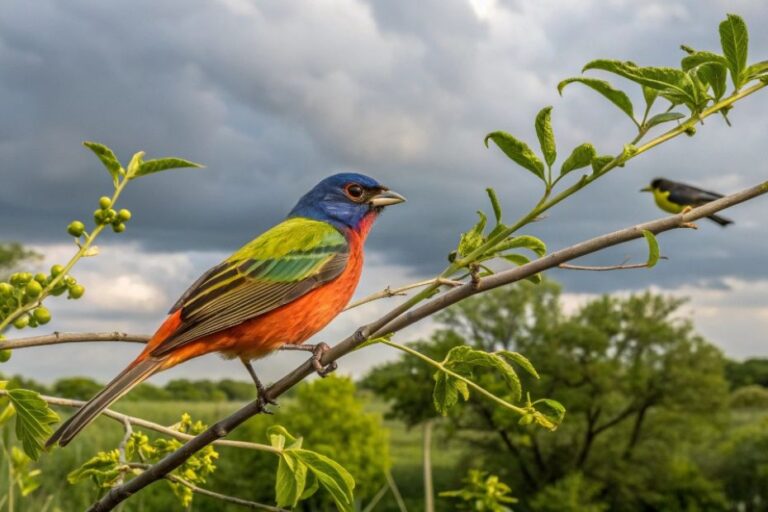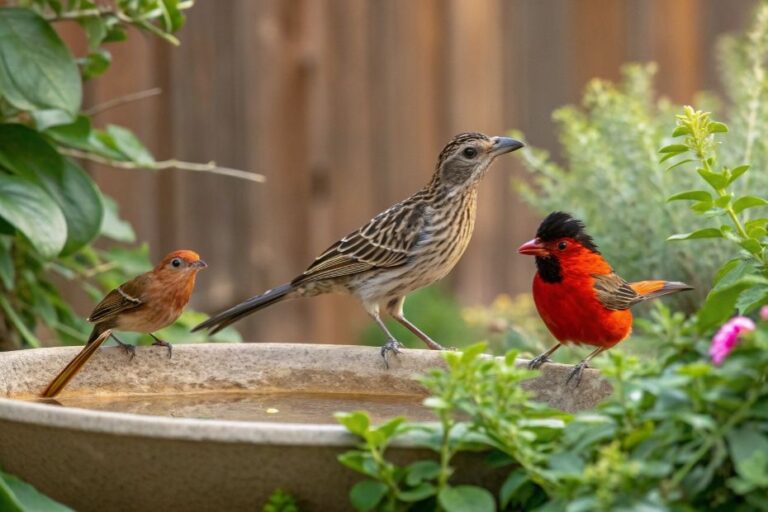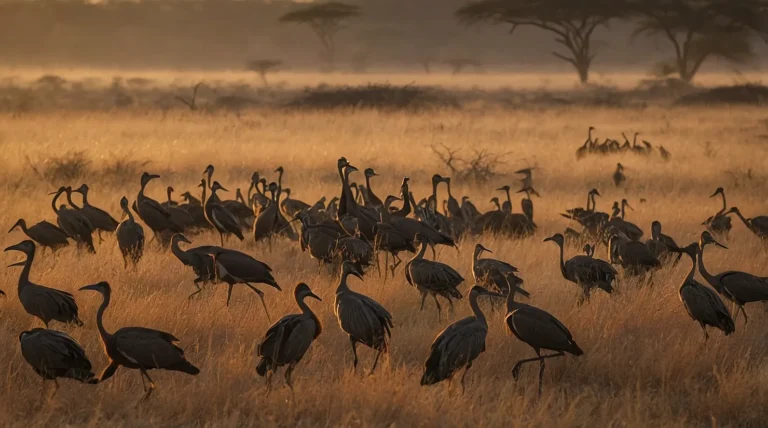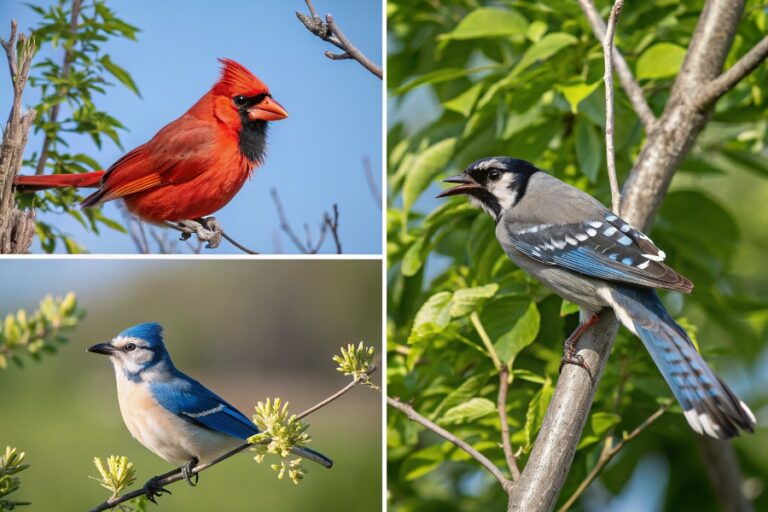Identifying Birds by Chest Color: Bird With Red Chest
Identifying birds by chest color involves a few key steps. First, observe the bird closely, using binoculars or a camera to get a clear view of the chest color and pattern, such as whether it is solid, streaked, or spotted.
At a Glance
How To Identify a Birds
Consider other features like overall coloration, size, shape, and distinctive markings such as eye rings or wing bars.
Note the bird’s behavior, such as feeding habits and flight patterns, and the habitat where it was found, whether it’s a forest, wetland, or backyard.
A Bird With A Red Chest?
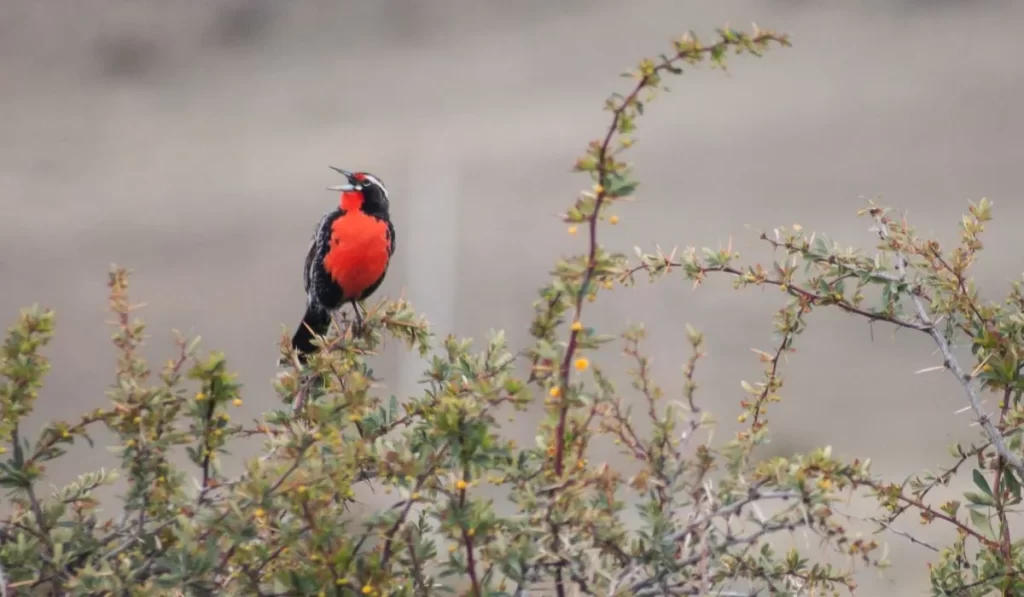
A bird with a red chest can be identified by several possible species, depending on your location and the specific appearance of the bird. Here are a few common examples:
North America
- American Robin:
- Description: The American Robin has a bright red or orange chest, gray upper parts, and a distinctive white eye ring.
- Habitat: Commonly found in gardens, parks, and forests.
- House Finch:
- Description: Males have bright red on their heads, throats, and chests. The rest of their body is brown-streaked.
- Habitat: Often seen in urban areas, backyards, and fields.
- Eastern Bluebird:
- Description: Males have a bright blue back and a rusty red chest. Females have a duller blue with more grayish tones.
- Habitat: Prefers open fields, farmlands, and forest edges.
Europe
- European Robin:
- Description: The European Robin has a bright orange-red chest and face with olive-brown upper parts and a white belly.
- Habitat: Commonly found in gardens, woodlands, and hedgerows.
- Common Redstart:
- Description: Males have a bright orange-red breast and face, a gray back, and a black throat. Females are duller.
- Habitat: Typically found in open woodlands and gardens.
Other Regions
- Red-Whiskered Bulbul (Southeast Asia):
- Description: Has a red patch behind the eye, red vent (undertail area), and a white chest.
- Habitat: Prefers open forests, gardens, and parks.
- Scarlet Robin (Australia):
- Description: Males have a bright red chest and face, with black upper parts and white underparts.
- Habitat: Found in woodlands, forests, and scrublands.
Read More: 7 Reason Why Do Parakeets Bob Their Heads
A Black Bird With A Red Chest
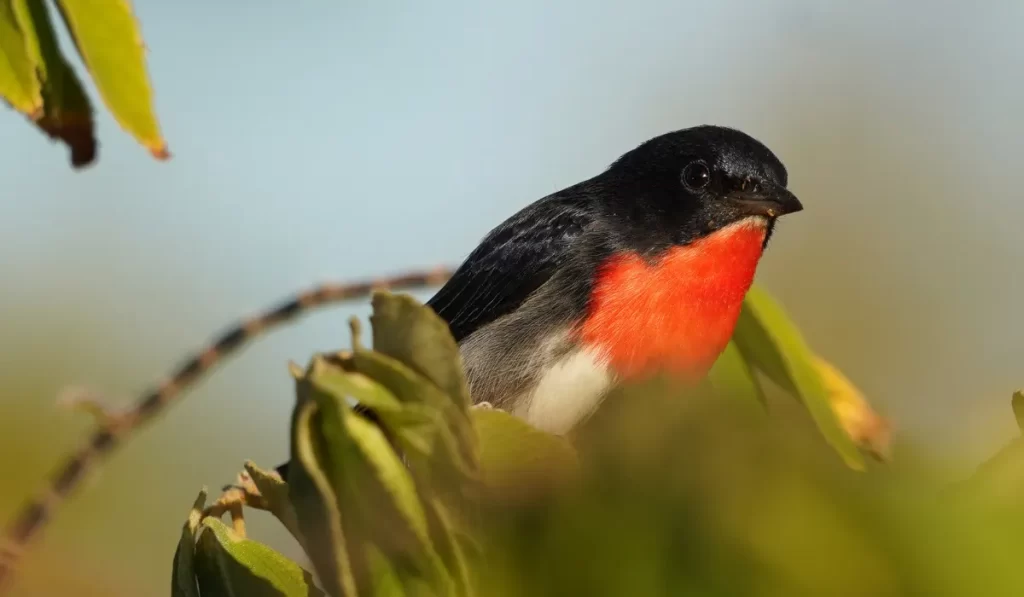
A black bird with a red chest could belong to several different species, depending on your location. Here are some possibilities:
North America
- Red-winged Blackbird:
- Description: Males have a glossy black body with bright red and yellow shoulder patches. The chest can sometimes appear red when the bird is in flight or displaying.
- Habitat: Found in wetlands, marshes, and along water bodies.
South America
- Scarlet-bellied Mountain Tanager:
- Description: This bird has a predominantly black body with a bright red belly and chest.
- Habitat: Commonly found in montane forests and high-altitude shrublands.
Africa
- Red-collared Widowbird:
- Description: Breeding males have a black body with a bright red collar across the chest and neck.
- Habitat: Prefers grasslands, savannas, and agricultural fields.
Asia
- Red-breasted Flycatcher:
- Description: Males in breeding plumage have a red-orange chest with black and gray upper parts. This description fits partially but might not match the entirely black body; however, variations exist.
- Habitat: Found in forests, woodlands, and gardens.
Australia
- Crimson Chat:
- Description: Males have a bright red chest and crown with a black back and wings.
- Habitat: Inhabits arid and semi-arid regions, often seen in scrublands and grasslands.
A Small Bird With A Red Chest
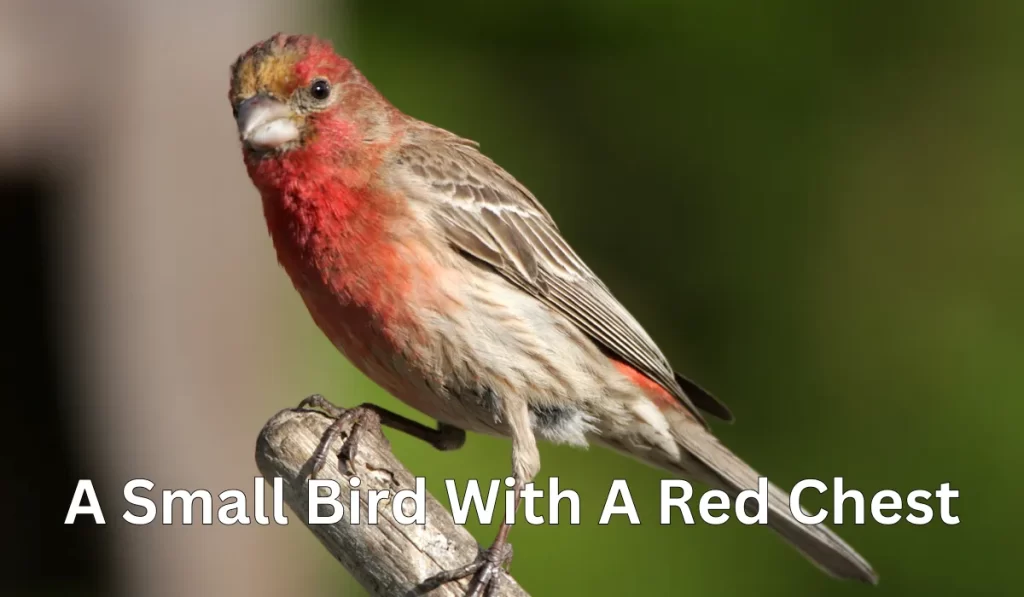
A small bird with a red chest can be identified as one of several species, depending on your geographical location. Here are some common examples:
North America
- House Finch:
- Description: Males have bright red on their heads, throats, and chests. The rest of their body is brown-streaked.
- Habitat: Often seen in urban areas, backyards, and fields.
- American Robin (Juvenile):
- Description: Juvenile robins have a speckled red chest which becomes solid as they mature. The rest of the body is grayish-brown.
- Habitat: Common in gardens, parks, and forests.
Europe
- European Robin:
- Description: The European Robin has a bright orange-red chest and face with olive-brown upper parts and a white belly.
- Habitat: Commonly found in gardens, woodlands, and hedgerows.
Asia
- Red-breasted Flycatcher:
- Description: Males have a bright orange-red chest with a greyish-brown body.
- Habitat: Found in forests, woodlands, and gardens.
Australia
- Scarlet Robin:
- Description: Males have a bright red chest and face, with black upper parts and white underparts. Females are duller with a reddish-brown chest.
- Habitat: Found in woodlands, forests, and scrublands.
- Mistletoebird:
- Description: Males have a bright red chest and a blue-black upper body with white underparts.
- Habitat: Commonly found in areas with mistletoe, such as woodlands and forests.
South America
- Vermilion Flycatcher:
- Description: Males have a brilliant red chest and head with dark brown upper parts and wings.
- Habitat: Found in open areas, such as savannas, grasslands, and near water bodies.
Read More: Japanese Bird Watching Boots for Your Outdoor Adventures
What Bird Is Black With A Red Chest
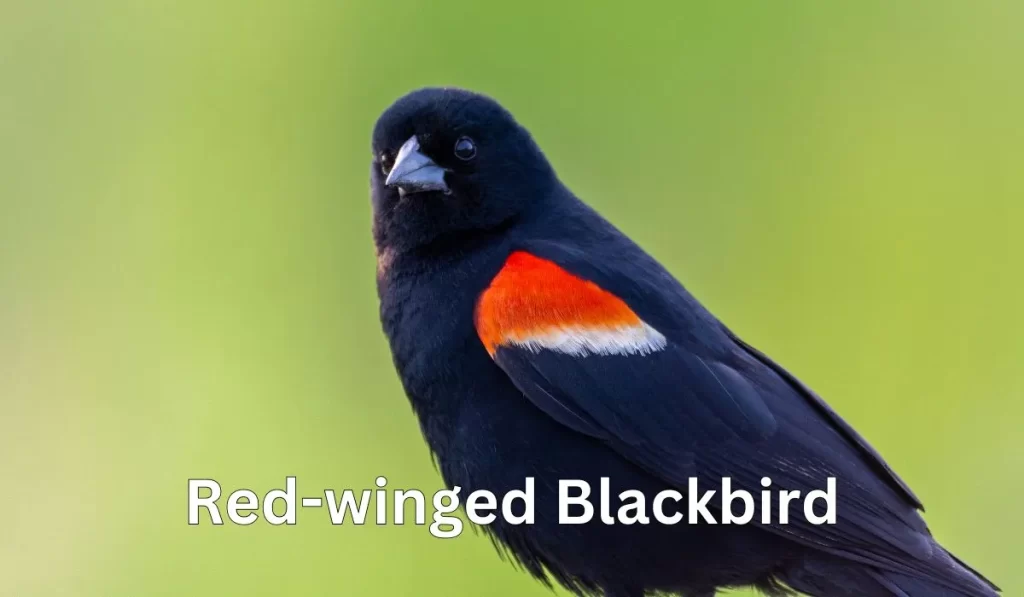
A black bird with a red chest can be identified as one of several species, depending on your location. Here are a few possibilities:
North America
- Red-winged Blackbird (Male):
- Description: Males are mostly black with distinctive red and yellow shoulder patches. While the chest is not red, the red patches on the wings can give a striking appearance.
- Habitat: Commonly found in wetlands, marshes, and along water bodies.
South America
- Scarlet-bellied Mountain Tanager:
- Description: This bird has a predominantly black body with a bright red belly and chest.
- Habitat: Found in montane forests and high-altitude shrublands.
Africa
- Red-collared Widowbird:
- Description: Breeding males have a black body with a bright red collar across the chest and neck.
- Habitat: Prefers grasslands, savannas, and agricultural fields.
Asia
- Crimson Sunbird (Male):
- Description: Males have a vibrant red chest and throat with a contrasting black upper body and wings.
- Habitat: Found in tropical forests, gardens, and plantations.
Australia
- Scarlet Myzomela:
- Description: Males have a bright red chest and head with black wings and back.
- Habitat: Inhabits forests, woodlands, and mangroves.
What Bird Is Blue With A Red Chest
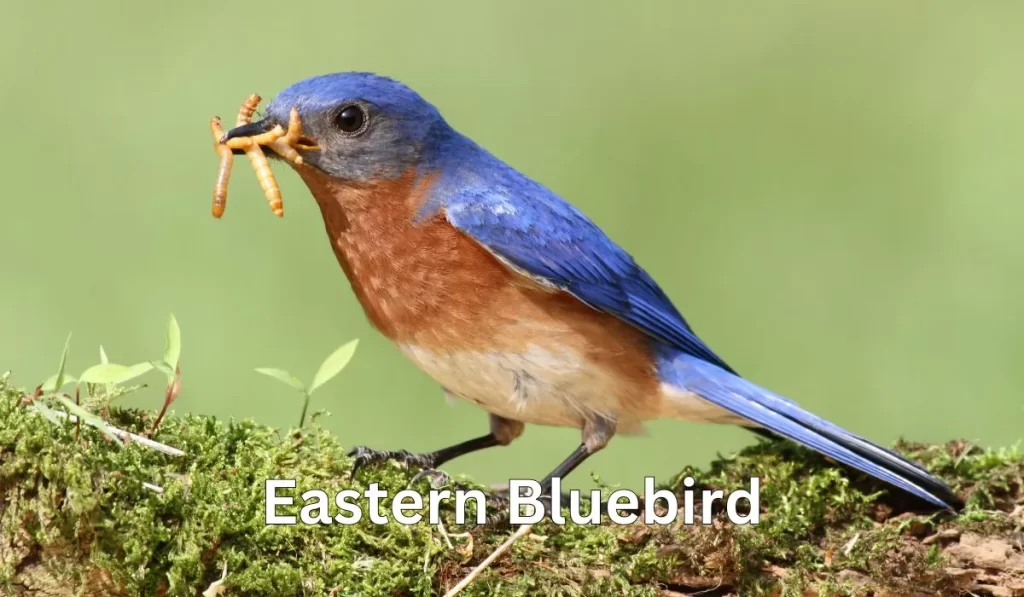
A bird that is blue with a red chest can be identified by several species, depending on your location. Here are some possibilities:
North America
- Eastern Bluebird:
- Description: Males have a bright blue back and wings with a rusty red chest. Females are duller with more grayish tones but still have some blue and red.
- Habitat: Found in open fields, farmlands, and forest edges.
South America
- Red-legged Honeycreeper:
- Description: Males in breeding plumage are mostly bright blue with a vivid red chest and legs.
- Habitat: Found in forest canopies and edges, often near water sources.
Europe
- Common Redstart (in some lighting conditions):
- Description: Males have a bright orange-red chest and face with grayish-blue upper parts and wings.
- Habitat: Prefers open woodlands and gardens.
Asia
- Blue Rock Thrush (Male):
- Description: Males have a dark blue body with a reddish-brown to orange-red chest and belly.
- Habitat: Found in rocky areas, cliffs, and old buildings.
Australia
- Rainbow Lorikeet:
- Description: This colorful parrot has a blue head and belly with a bright red chest, along with green wings and back.
- Habitat: Commonly found in coastal regions, forests, and urban areas.
FAQs Related to Identifying Birds by Chest Color
1. Why is chest color important for bird identification?
Chest color is a and distinctive feature that can help differentiate between bird species, especially when combined with other characteristics such as size, shape, and behavior.
2. What should I do if I see a bird with an unusual chest color?
Take detailed notes and photos if possible. Note the bird’s size, shape, behavior, and habitat. Use field guides or birding apps to compare your observations with known species.
3. Are there any tools or apps that can help identify birds by chest color?
Yes, there are many birding apps like Merlin Bird ID, eBird, and iBird Pro that allow you to input specific features like chest color to help identify the bird.
4. Can chest color vary within the same species?
Yes, chest color can vary due to factors such as age, sex, and seasonal changes in plumage. Males and females of the same species often have different coloration, and juvenile birds may look different from adults.
Final Thoughts
Identifying birds by chest color is a rewarding aspect of bird watching that requires keen observation and attention to detail.
Noting unique features like chest color, along with overall appearance, behavior, and habitat, enthusiasts can accurately identify and appreciate the diverse avian species around them.
Utilizing resources such as field guides, birding apps, and community support enhances the experience and fosters a deeper understanding of the natural world. Happy birding!

